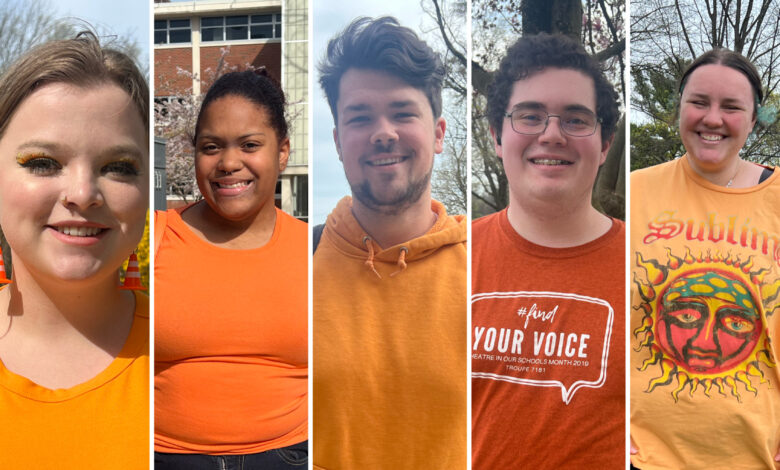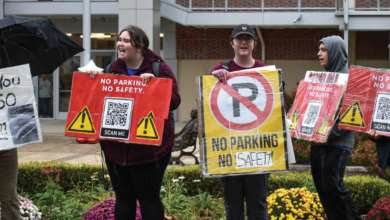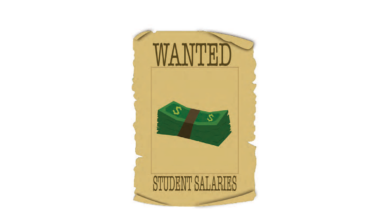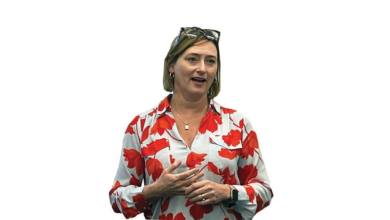
Shooting threat spurs campus safety conversation
By Amethyst Martinez and Kaitlyn McCormick
WITH a petition of over 400 signatures calling for action regarding campus active shooter preparedness, the impacts of a recent threat and shelter-in-place have reverberated throughout the Rider community, prompting many to be their own change-makers.
Rider students have taken to grassroot efforts on social media to air their grievances with the university’s response to the active shooter threat on April 3 and trailblaze movements to spread awareness on gun violence, while also demanding action from Rider officials.
The change.org petition, titled “Rider University Needs to Change,” which has amassed hundreds of signatures over the course of a week, is a student-led initiative spearheaded by freshman musical theater major Fiona Hodgson.
The petition called for the university to accomplish three tasks in the wake of the incident: a training program for professors, a clarified system of alerts for the Rider community and the addition of locking mechanisms to all classroom doors on campus.
“It’s just sad that it had to get to this point for these things to take place,” said Hodgson. “If this was something real, there’s no way to go back.”
Another student-led movement took place on April 11, calling for students to wear orange for gun violence awareness. The initiative was started by sophomore sociology major and Nashville, Tennessee, native Jennie Mae Sprouse, who called the movement a “protest statement” against gun violence after the recent school shooting in her hometown took the lives of three adults and three children. Exactly one week after that shooting, Rider’s 52-minute shelter-in-place rattled students, faculty, staff and administration alike.
“I was just trying to find some sort of way to sort of make a statement to the university that one, gun violence is real, [and] two, it needs to be taken more seriously at this school,” said Sprouse.
The university’s response
Following the April 3 shelter-in-place, the university implemented a Campus Safety Preparedness Committee and subsequent universitywide emails have provided updates and information regarding its progress.
The committee is co-chaired by Barbara Lawrence, vice president for diversity, equity and inclusion and chief diversity officer, along with Michael Reca, vice president for facilities and university operations.
After multiple attempts to schedule an in-person interview, Lawrence failed to make herself available, but did answer questions from The Rider News via email.
Lawrence said in an email that her hope for the committee is “to create an engaged campus-wide committee that will promote a comprehensive and strategic approach implementing and assessing our institutional safety risks and formulating sound solutions to protect the University for different types of incidents.”
Others on the committee include Kristine Brown, associate vice president of university marketing and communications, David Burns, commander of emergency management and preparedness, Roberta Butler, associate dean for Residence Life, Eugene Kutcher, dean of the Norm Brodsky College of Business and James Waldon, director of Rider Public Safety.
“My hope is to identify if there are deficiencies, address those deficiencies and implement as much as we can over the summer,” said Reca.
Reca said the day the threat happened, he, Public Safety Officers and six facilities staff members began a campus sweep, identifying any potential problems, such as doors that don’t lock or blinds that may need to be added. As they continued to inspect and decipher issues on campus, they created a list of items that need to be addressed and repaired.
“We can be very strategic about it, and that’s what we’re going to do,” said Reca.
Expanding voices
No students or faculty members were named to the committee in its initial announcement, but Reca said plans to announce such sub-committees are to be released on April 13.
As of April 11, David Dewberry, president of Rider’s chapter of the American Association of University Professors (AAUP) said he had yet to hear of any official request for faculty members to serve on the committee.
Dewberry said, “I see no students, I see no faculty on those committees, and it would be nice to have those included. …I hope in good faith that they’re trying to do the best they can, but there was a certain lack of information.”
Although students and faculty were not publically included in the committee details, a group of 10-12 students was compiled by Andrew Bernstein, Student Government Association (SGA) president.
Bernstein, a senior political science major, said he was approached April 6 by the Campus Safety Committee co-chairs to gather a group of students who may be interested in serving on a sub-committee.
Bernstein said, “I think students have a lot to say on this. Giving them the outlet is not only going to come up with some great ideas, but I think will help address things that may be overlooked by people who aren’t living on campus 24/7.”
Faculty weigh in
Since Dell’Omo’s announcement of the Campus Safety Preparedness Committee, many have made clear their disappointment that faculty and student voices were not being included from the beginning of the committee process.
Sociology and criminology professor Sarah Trocchio, who was on campus teaching during the April 3 shelter-in-place, expressed multiple points of disappointment in both the university’s response the day of the incident and subsequent committee compilation that, at the time of its April 5 announcement, included no student or faculty perspectives.
Trocchio said it shows how “out of step” some of the upper-level administration was with tackling this issue.
Faculty members also recalled feeling hurt and frustrated by what they described as a lack of concern from the administration immediately following the shelter-in-place, as classes were expected to continue that afternoon and evening.
“There was no actual support extended to our community,” Trocchio said. “There was no follow-up to faculty, checking in … having a listening session, I haven’t heard anything like that in the immediacy of this extremely traumatic experience even offered to students.”
Though some faculty expressed discontent with the university’s response specifically regarding the emotional and mental wellbeing of faculty, resources from the counseling center were shared universitywide in the aftermath of the event.
Rider Counseling Center Director Anissa Moody shared that there had been an uptick in traffic since April 3.
“[Students] wanted to come in and process and talk about things, so we worked pretty quickly to make sure that students were able to come in and have their space and time to talk about it,” Moody said.
Complaints like Trocchio’s are ones that Dewberry said he heard anecdotally from those represented by the AAUP.
“I think right now we’re still kind of feeling the trauma of the situation,” Dewberry said, “And more help is always better than less help. … I think this might be a bigger situation than your ‘normal’ incident that might require some intervention.”
A focus on training
The committee announced April 9 that it would hold 10 training sessions on emergency preparedness for hostile intruders and active shooters before the end of the spring semester.
Faculty like English professor Megan Titus, however, feel that the shelter-in-place that scared many in the campus community taught an unfortunate lesson.
“How do we manage? Where are the students going to go? What’s the size of the classroom? Where’s the door? … At the beginning of each semester if I’m in a new classroom, I’ll be assessing,” Titus said.
According to the Lawrence Police Department, the investigation is still ongoing for the swatting incident that caused the uptick in active shooter preparedness concerns at the university, and the investigative division is working with state and federal law enforcement to identify potential suspects.
Trocchio said, “We were the ones that were, in many ways, most directly impacted. … Many of us that were in class are in a different situation [than] upper-level administrators who may have had their own offices to privately lock.”


